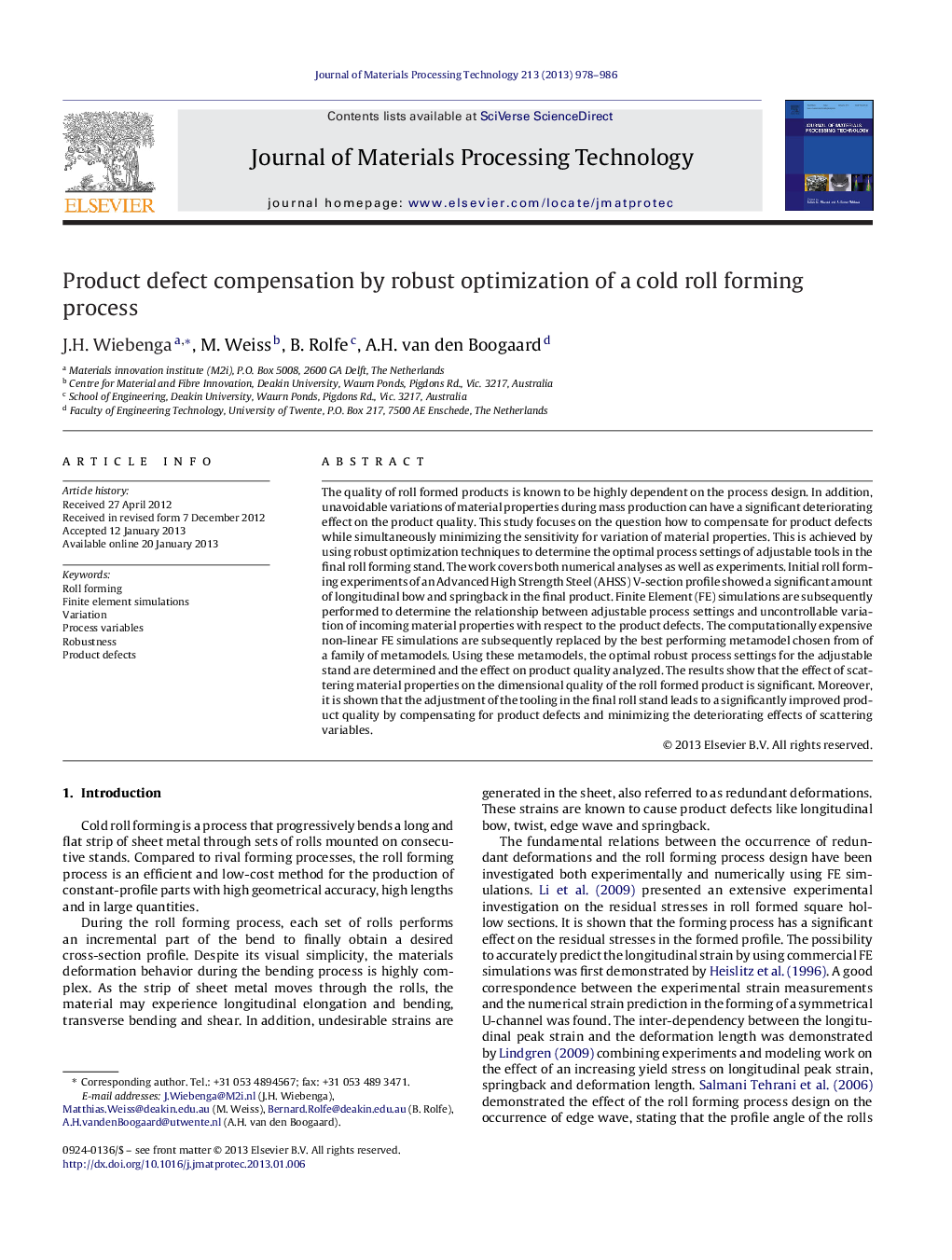| Article ID | Journal | Published Year | Pages | File Type |
|---|---|---|---|---|
| 795913 | Journal of Materials Processing Technology | 2013 | 9 Pages |
The quality of roll formed products is known to be highly dependent on the process design. In addition, unavoidable variations of material properties during mass production can have a significant deteriorating effect on the product quality. This study focuses on the question how to compensate for product defects while simultaneously minimizing the sensitivity for variation of material properties. This is achieved by using robust optimization techniques to determine the optimal process settings of adjustable tools in the final roll forming stand. The work covers both numerical analyses as well as experiments. Initial roll forming experiments of an Advanced High Strength Steel (AHSS) V-section profile showed a significant amount of longitudinal bow and springback in the final product. Finite Element (FE) simulations are subsequently performed to determine the relationship between adjustable process settings and uncontrollable variation of incoming material properties with respect to the product defects. The computationally expensive non-linear FE simulations are subsequently replaced by the best performing metamodel chosen from of a family of metamodels. Using these metamodels, the optimal robust process settings for the adjustable stand are determined and the effect on product quality analyzed. The results show that the effect of scattering material properties on the dimensional quality of the roll formed product is significant. Moreover, it is shown that the adjustment of the tooling in the final roll stand leads to a significantly improved product quality by compensating for product defects and minimizing the deteriorating effects of scattering variables.
► Numerical and experimental study on product defect compensation in roll forming. ► Compensation is enabled by usage of adjustable tooling in the final roll stand. ► Significant amount of longitudinal bow and springback detected in formed product. ► Scattering material properties highly effect the magnitude of the product defects. ► Results of the robust optimized process show improved dimensional product quality.
